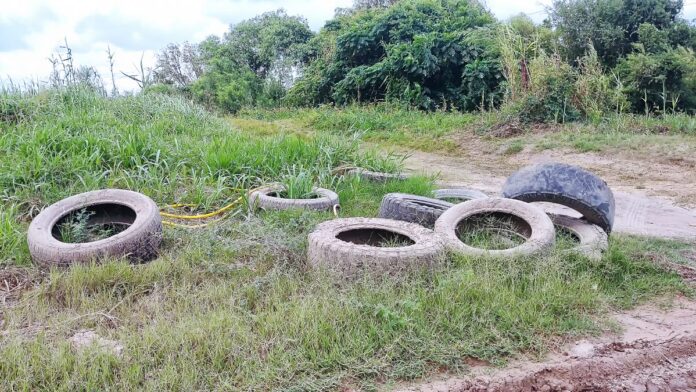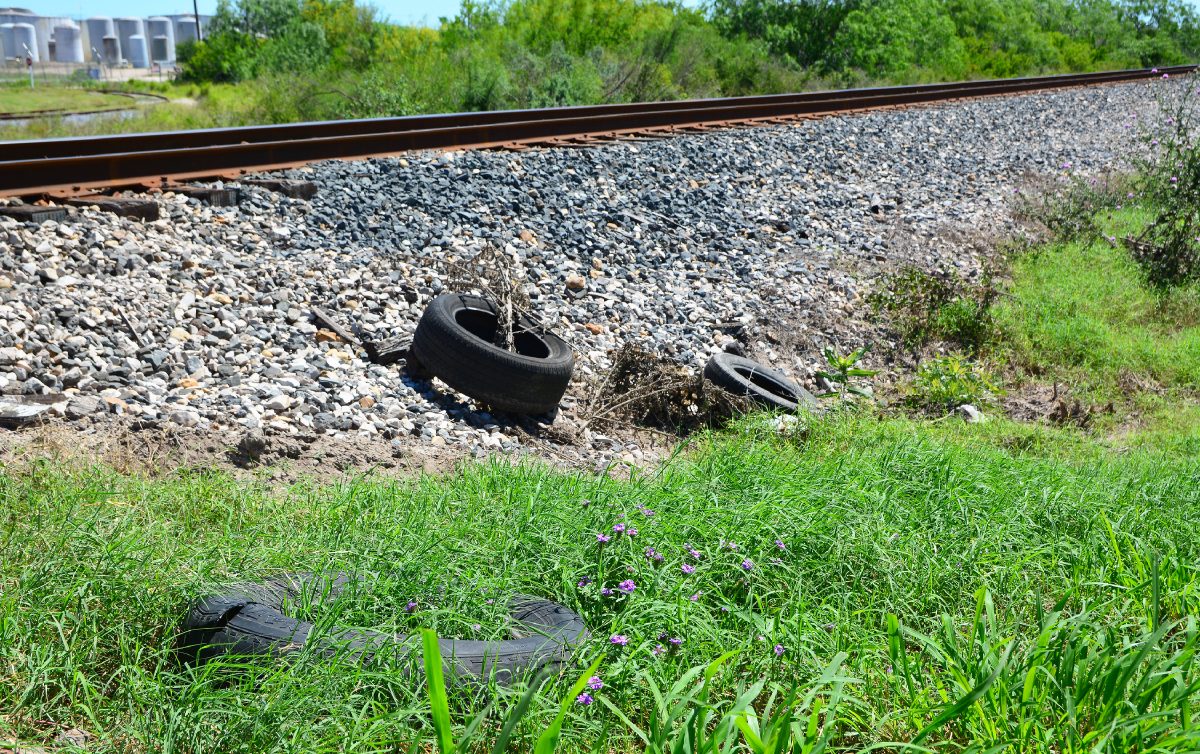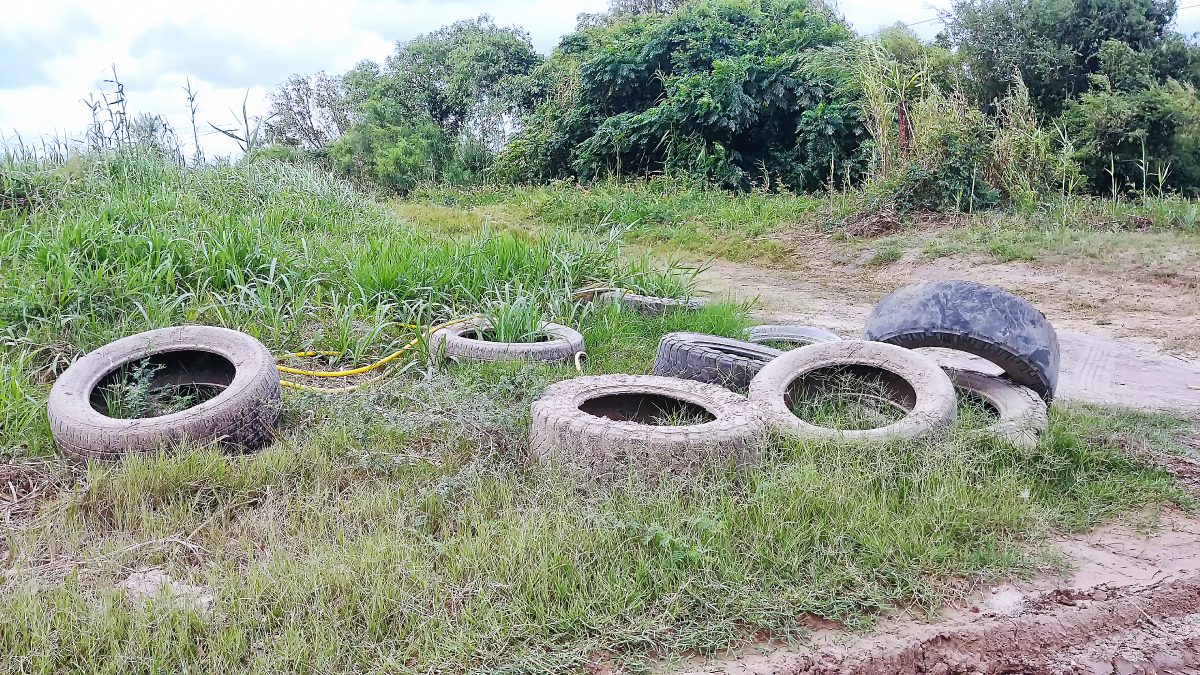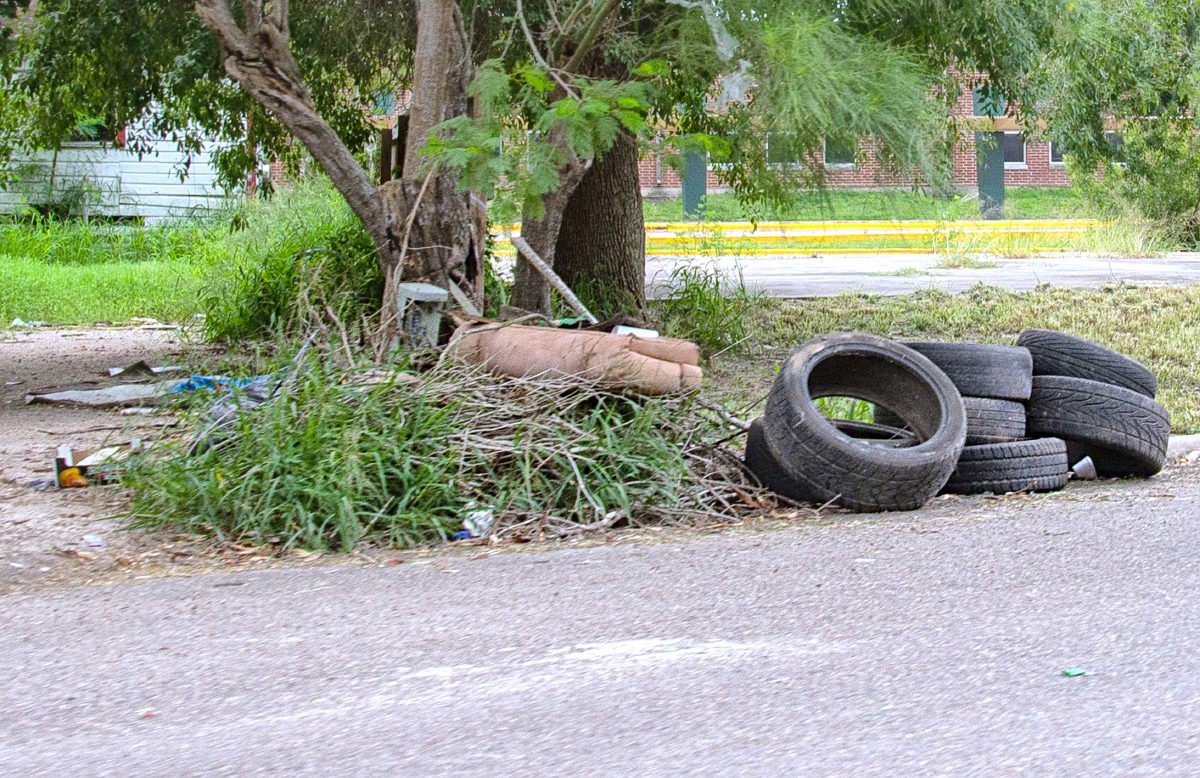WESLACO — The success of the Valley’s three-year “Road to Recycling” tire collection efforts is spurring a more intensive effort to help alleviate one of the environmental plagues of the region.
The Lower Rio Grande Valley Development Council is pursuing a study to be performed by UTRGV’s civil engineering department to assess the feasibility of a state-supported tire recycling program on a far larger scale than is currently possible.
“Just to remind everybody, it’s estimated that we have millions of tires in our area (abandoned), not thousands, millions,” Ron Garza, executive director of the LRGVDC, told the board last month. “So we’re going to be tackling this issue for a long, long time.”
Abandoned tires along roadsides are breeding grounds for potentially disease-carrying mosquitoes, are fire hazards and have been implicated as a major factor in making flooding problems worse by blocking drainage ditches. The three-year program has prompted Valley residents to drop off more than 83,000 used and unwanted roadside tires to be transferred to municipal landfills.
“For the year 2019, we collected over 40,000 tires,” Garza said. “This has been a huge event and we’ll continue to do this. We’re learning every time we do a process like this, and I think people are learning it takes a regional effort to control this issue.”
In Harlingen in 2018, 190 passenger vehicle tires were disposed of with the city, along with 96 semi-truck tires. This year saw 96 passenger vehicle tires dropped off.
Garza has previously briefed the LRGVDC board on an informational visit he took in March to Arkansas, which has one of the most innovative tire recycling programs to be found anywhere.
“It’s basically a state-supported program but they shred it, they sell that tire aggregate, and it’s a self-sustaining system,” Garza said. “We canvassed all over, not only the nation but the globe, we looked all over the world, and come to find out the State of Arkansas right next door is doing some creative things.”
The Arkansas Tire Accountability Program, or TAP, has taken tire collection to a different level by crunching up the tires in massive machines and selling the resulting rubber aggregate for commercial uses.
Here in the Valley, the tires collected end up in landfills, although thanks to the City of Brownsville’s donation of “The Terminator” machine, some of the tires are ground down into small pieces. Those rubber bits still go into local landfills, but the tire chunks are a lot more environmentally friendly, officials say.
“We had some great discussion with UTRGV and the Civil Engineering Department has agreed to take this on in terms of a very preliminary study,” Garza said. “Basically what UTRGV will be looking at is, if we shred these down to certain compounds, what can we use them for? It’s true recycling.”
At UTRGV, Dr. Mohammed Abdel Raheem is a member of the team currently brainstorming ideas for new and novel applications for recycled tires.
“What we are trying to do is think out of the box,” said Abdel Raheem, an assistant professor in the civil engineering department. “We have Dr. Jungseok Ho, who’s the chair and he’s in the areas of water resources. We have Dr. Philip Park, and he’s in the area of materials, construction materials, and we have Dr. Jong-Min Kim, he’s in the area of environmental engineering and me, I’m in the area of construction engineering and management.”
Recycled tires can be finely ground into what’s called “crumb rubber,” which can be used in rubberized asphalt for road paving, for playground fall zones, safety mats and vehicle mud guards.
Shredded or chipped tires can also be used as a liner or cover for landfills, as filters in wastewater treatment or for wetlands. It can even be used as garden mulch, and has the benefit of not attracting termites.
“Previous attempts tried to incorporate things like concrete, for example,” Abdel Raheem added. “They would use it as a filler instead of sand and the whole objective of this research or what they did in the past was basically try to find a viable alternative for burying the rubber tires. The burial of the tires is a burden by itself.
“If we can use it in concrete filler, then that would be a win-win,” he added. “But unfortunately, the results showed that it actually deteriorates or it lowers the compressive tensile of the concrete. Other research is focusing on incorporating it in asphalt since the asphalt and the rubber are similar in origin. And it gives better performance.”
Abdel Raheem said the UTRGV study team would keep the Arkansas operation in mind, and may travel to the site or at least meet face-to-face with officials there for an interview online using Skype.
Yet he has little doubt the exercise will be good for both he and his colleagues and UTRGV engineering students.
“It’s also going to be a great opportunity for our students to work on a real-life application and hopefully this will be translated into some research money,” he said.
MORE INFO
Road to Recycling numbers
2017 (3 dates) 2018 (1 date) 2019 (1 date)
Tires collected 42,000 16,800 24,600
Total Drop-off sites 63 42 51
Total participants 24 19 34
Source: Lower RGV Development Council
Report abandoned tires
If you notice tires that are improperly disposed of or abandoned, report the location and other details to your local city or county authorities with jurisdiction in the area.
You can also contact the TCEQ regional field office for your area. For the Valley, the Harlingen office is at 1804 W. Jefferson Ave. and can be reached at 956-425-6010.
Or you can file a tire complaint online at www.tceq.texas.gov/compliance/complaints
Source: Texas Commission on Environmental Quality








